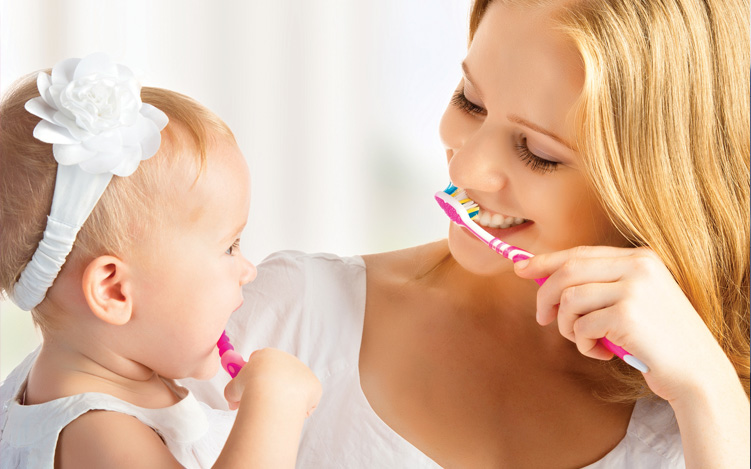Will your child have a future Filled with healthy smiles?
Teeth add to your smile, allow you to enjoy delicious foods, and rip apart that plastic wrap off your new DVD. However, as a parent, you might be wondering whether you’re setting up proper oral hygiene habits for your child, or if the little tike is headed straight towards cavities, tooth removal, and possible gum disease. Take this handy pop quiz to see if you’re equipping your child to take care of his pearly whites for years to come.
1) How early can tooth decay emerge in your baby’s mouth?
- Three months
- Five months
- Six months
- One year
2) What should a parent do to prevent early tooth decay for newborns and infants?
- A few days after the child is born, begin by using a clean, moist gauze or washcloth to remove plaque.
- Take a smear of toothpaste on your finger and rub it over your child’s gums.
- Look into a child’s mouth really closely to see if you can spot plaque.
- Don’t worry about early tooth decay until your child is older.
3) True or False: Most children have their primary teeth (not permanent) by age three.
4) When should a parent begin brushing their children’s teeth?
- Age three or younger.
- As soon as the first tooth appears in the infant’s mouth.
- Age four.
- No age required; whenever the parent decides.
5) When should a parent schedule his or her child’s first dentist visit?
- Within six months of the first tooth appearing.
- Within a few months after birth.
- When they start showing lots of teeth.
- When they are no longer using a bottle.
6) True or False: Diarrhea and fever are normal symptoms of a teething baby.
7) When should flossing become a part of the child’s oral care routine?
- When they choose to
- As soon as two teeth are touching
- When the child begins chewing and eating solid foods
- At the parents’ discretion
8) What should be in a child’s diet to prevent tooth decay?
- Foods with food labels a parent has approved
- More fruits and vegetables (those with lower sugar count)
- More lean proteins and dairy
- Less sugary drinks and juices
- All of the Above
Resource: Information provided by the American Dental Association Mouth Healthy website, www.mouthhealthy.org.
ANSWERS
Answer 1: C) Six months. Known as Baby Bottle Tooth Decay, babies are susceptible to tooth decay as early as six months. Decay can form in the upper front teeth, where a baby bottle is commonly positioned.
Answer 2: A). For your newborn’s mouth, begin by using a clean, moist gauze or washcloth to wipe over the gums, which will remove plaque that is starting to grow. Start brushing your infant’s teeth as soon as they begin to appear.
Answer 3: True. Around 20 primary teeth emerge in a child’s mouth by age three, while their jaws continue to grow for permanent teeth.
Answer 4: B) As soon as the first tooth appears in the infant’s mouth. For toddlers younger than three years, parents can help children brush with fluoride toothpaste twice a day (morning and night), but with no more toothpaste than a dot the size of a rice grain. Toothpaste amount can increase to that of a pea size when the child is three to six years old.
Answer 5: A) The ADA recommends that the first dental visit take place within six months after the first tooth appears, but no later than the child’s first birthday. By going to the dentist as soon as the first tooth appears, parents can not only prevent early tooth decay, but also help the child become familiar with visiting the dentist so he/she will be more comfortable going as he/she grows older.
Answer 6: False. Fever, diarrhea and rashes are not normal symptoms of teething, so if your baby is experiencing any of these problems, a visit to the pediatrician is recommended.
Answer 7: B) When two teeth are touching. At this point, when the teeth are touching, plaque can begin forming in that area of the tooth and could lead to tooth decay if not flossed daily.
Answer 8: E) All of the Above. Teaching your child to eat healthy with foods and drinks with less sugar and fat can not only reduce tooth decay, but also allow them to benefit from a healthier body and more energy. Sweets and sugary drinks could even be saved for special occasions or the weekends (or more regularly in a reduced amount) so that children will see these items as treats and not part of their normal diet.
CREDITS
story by BLAIR TOWNLEY
